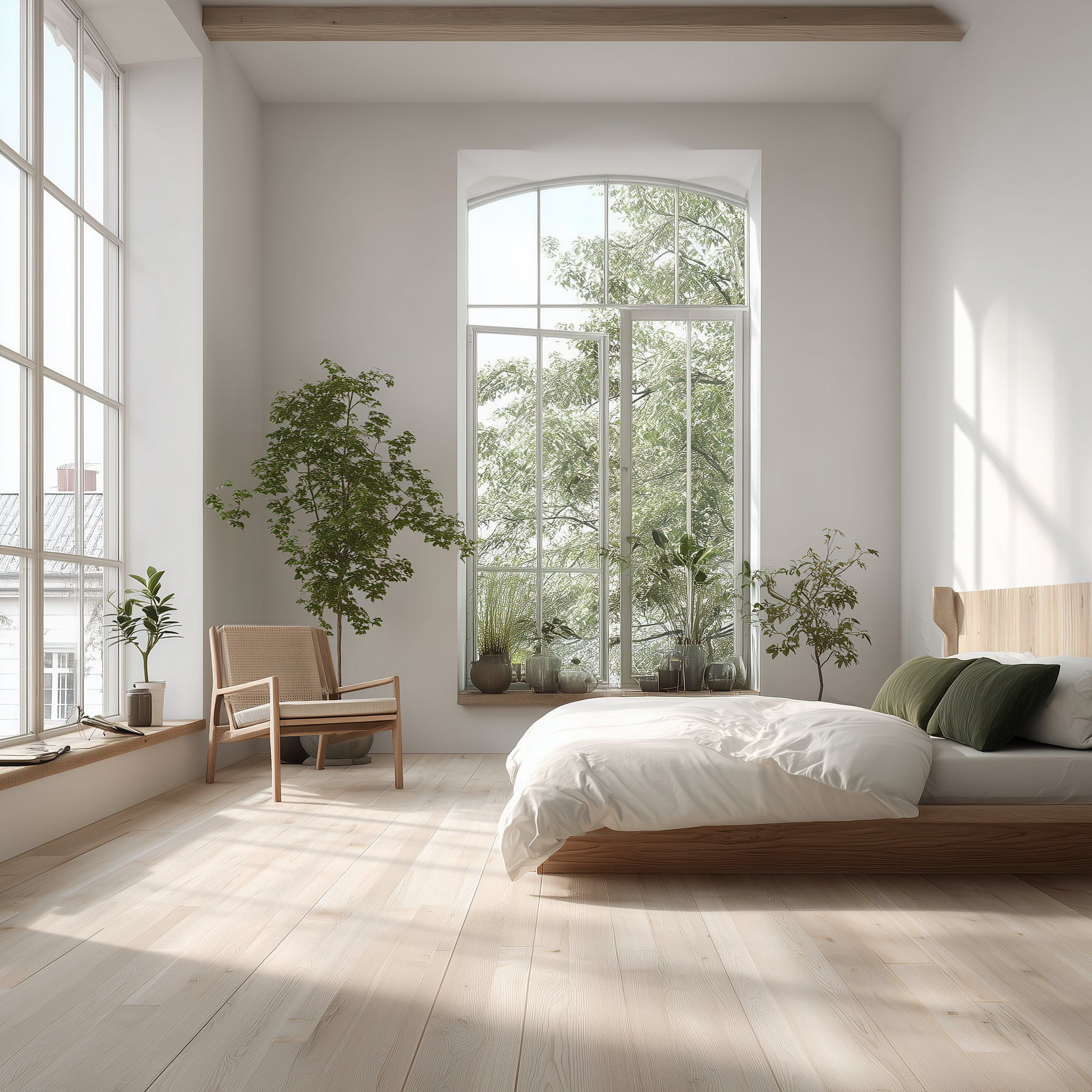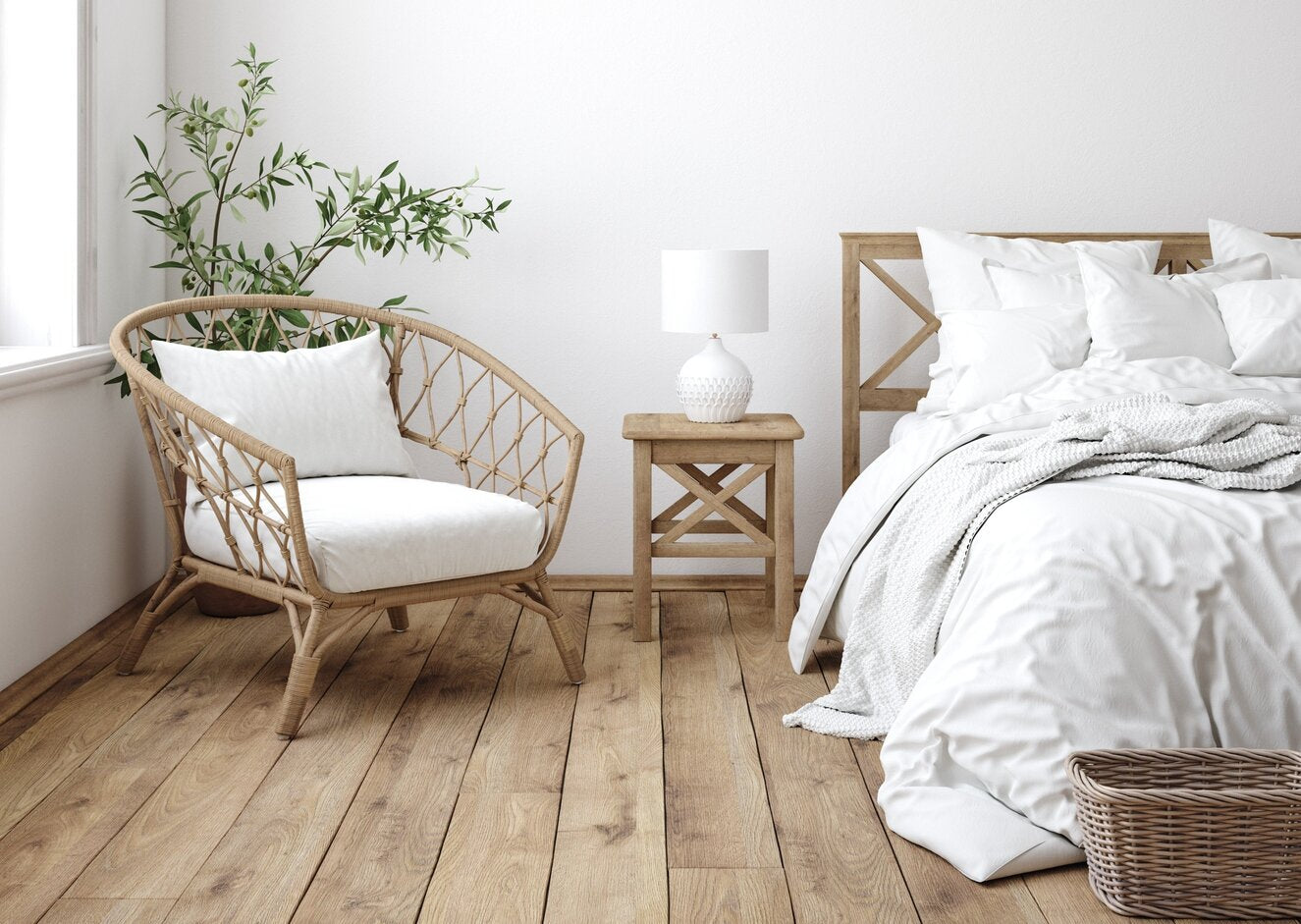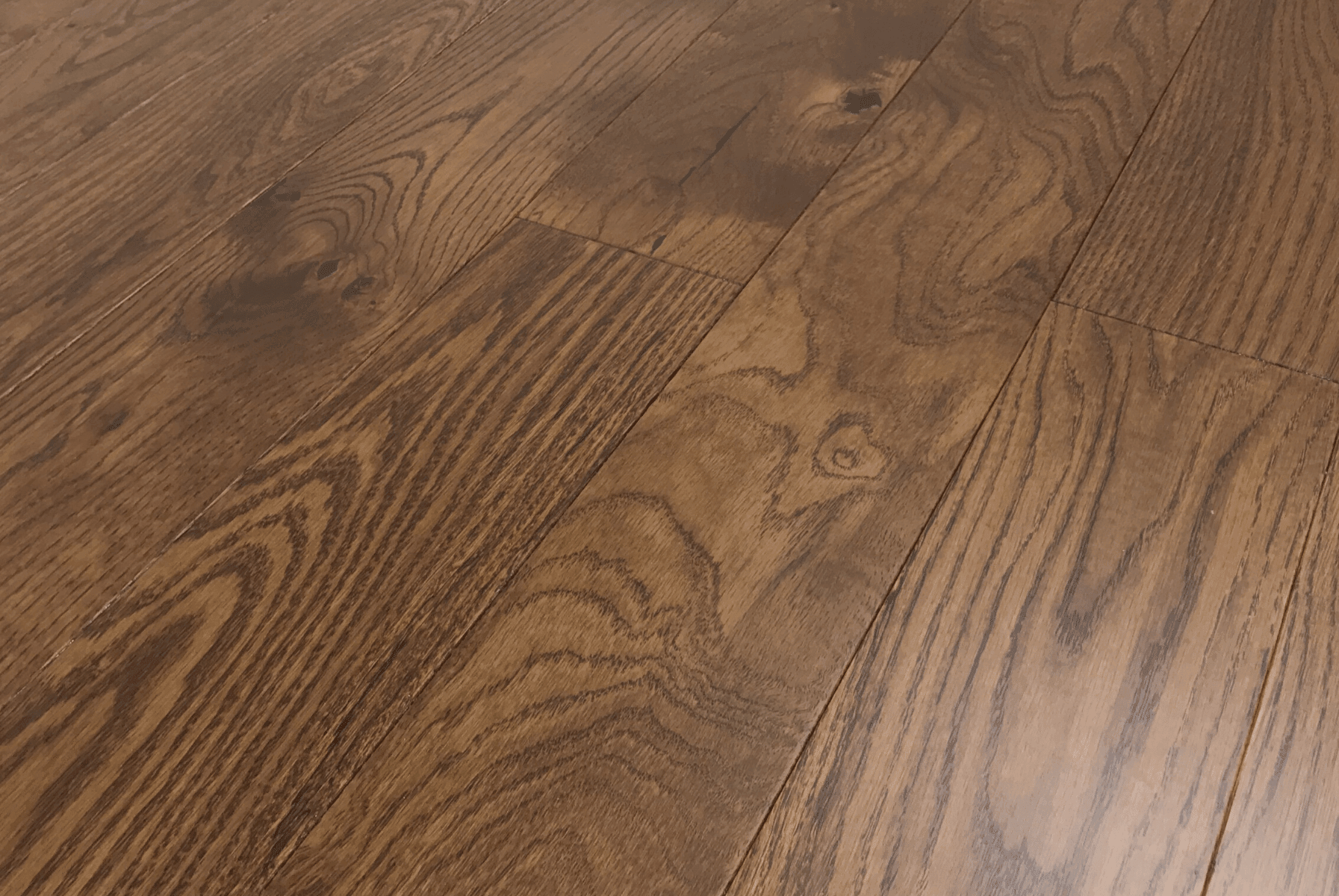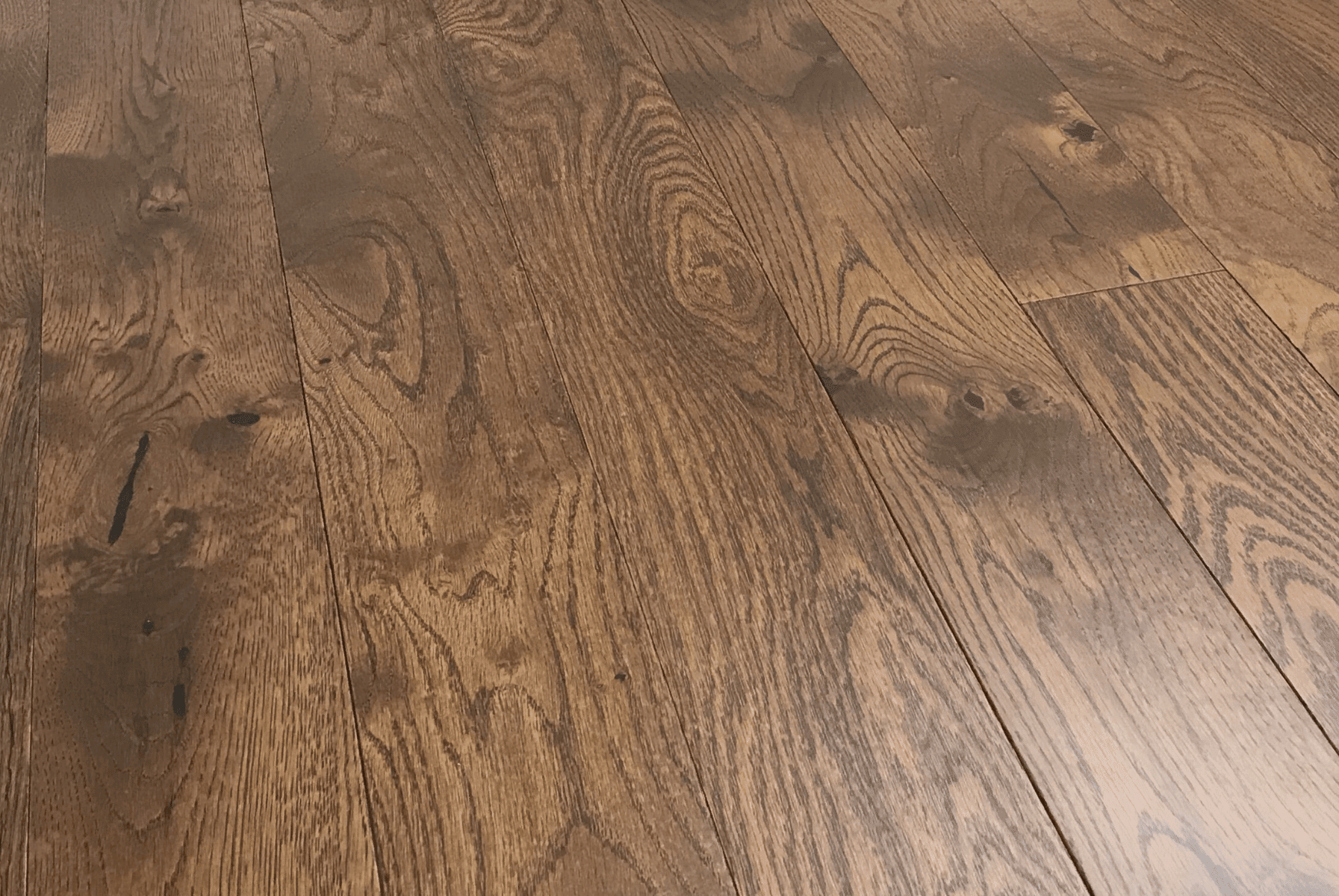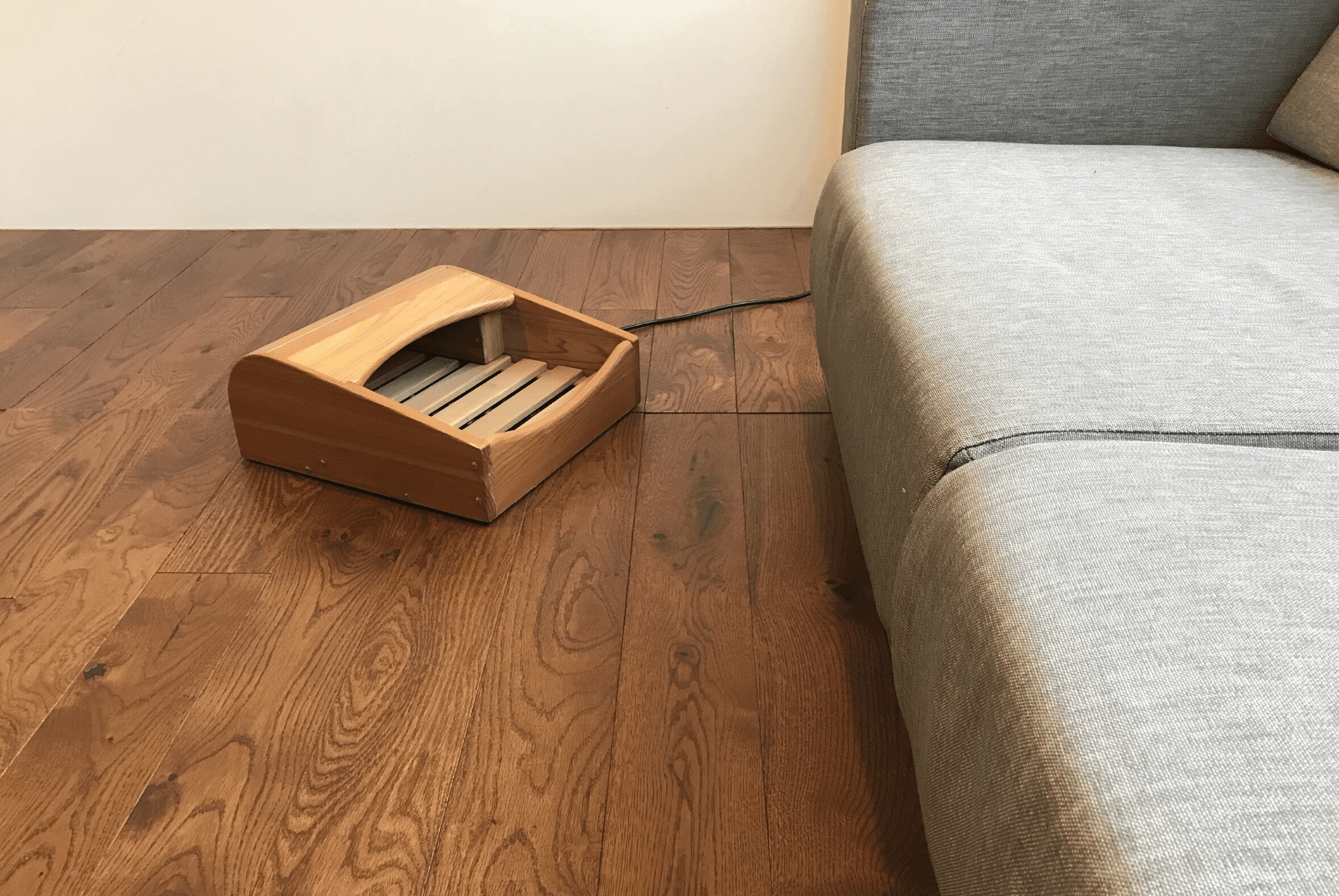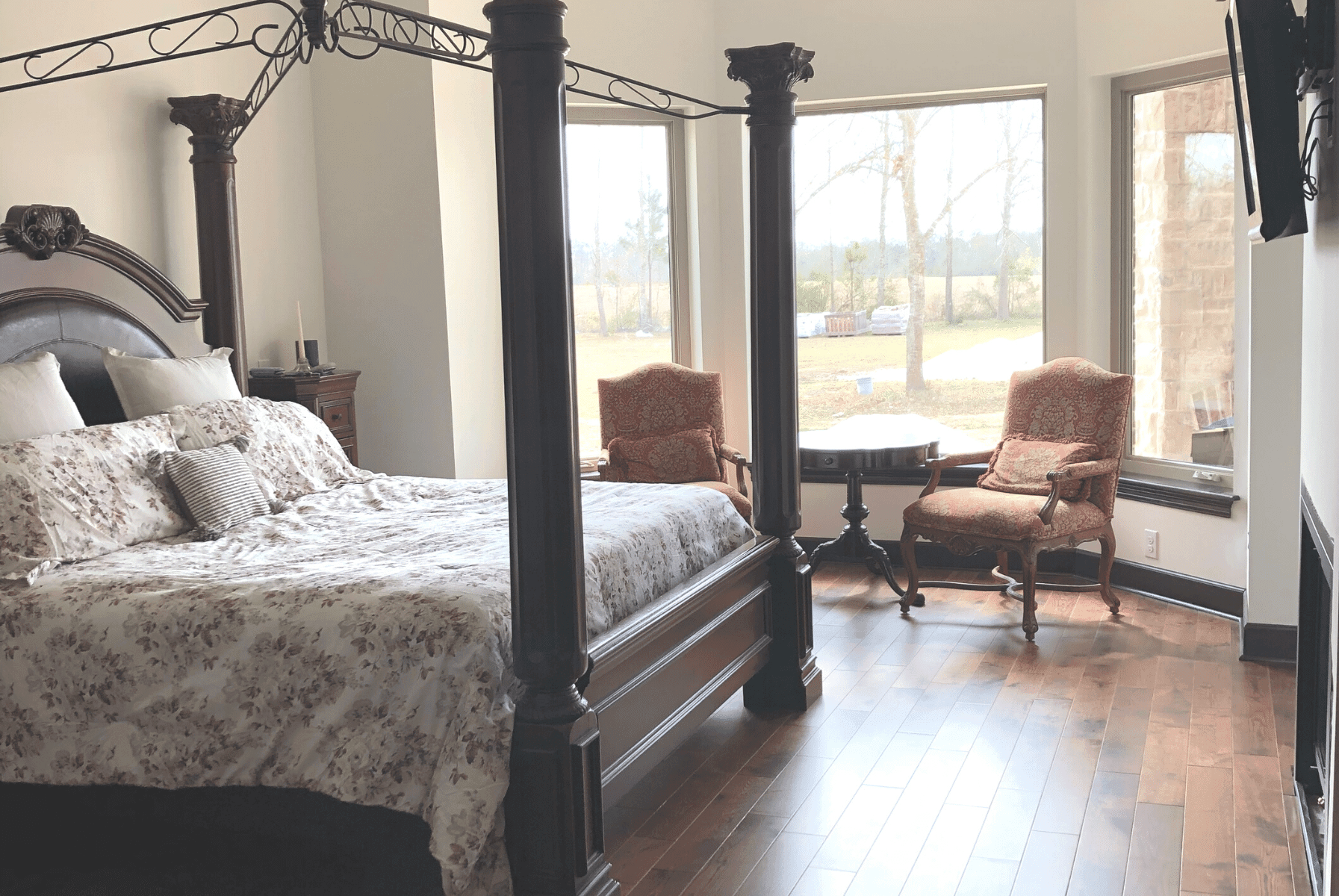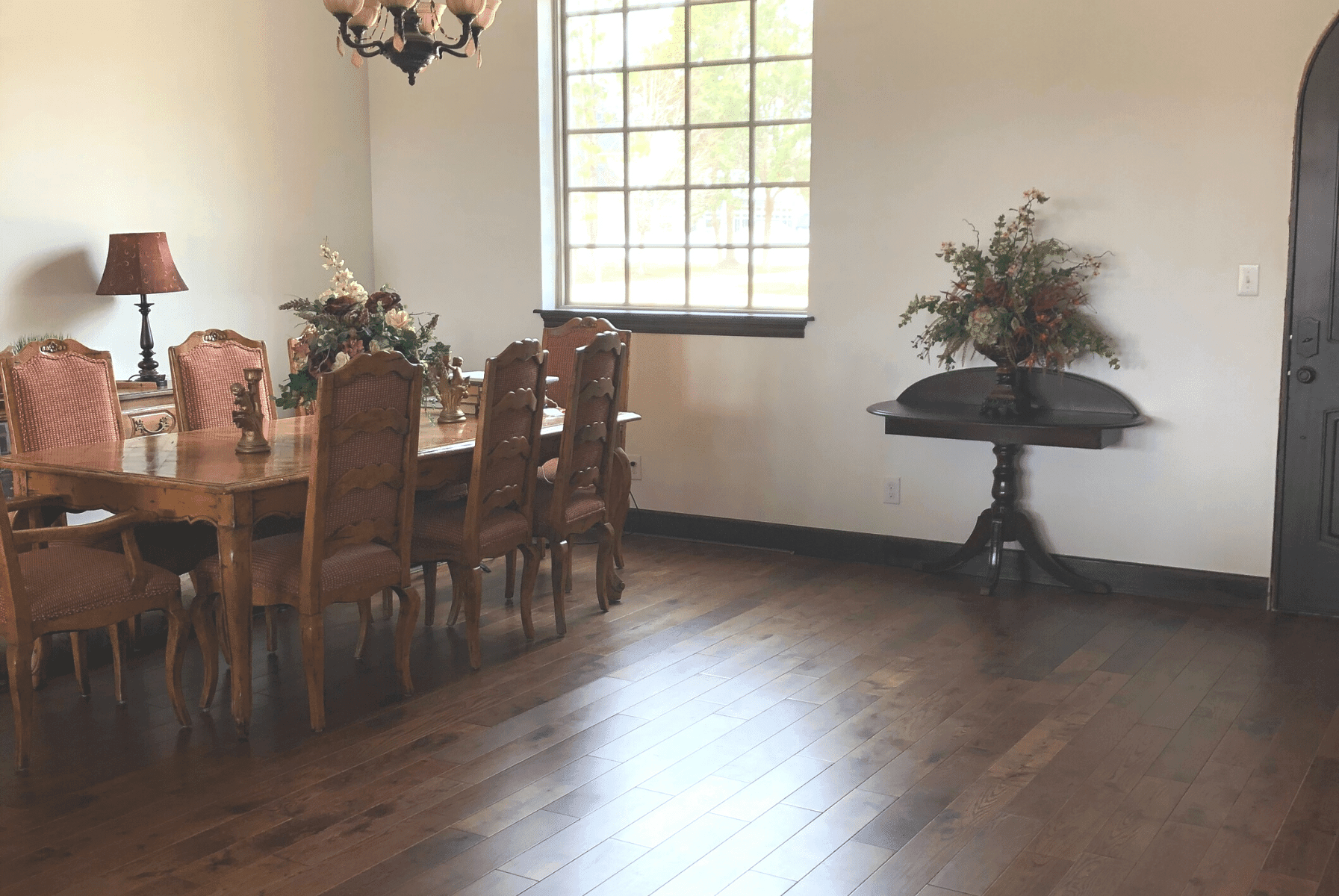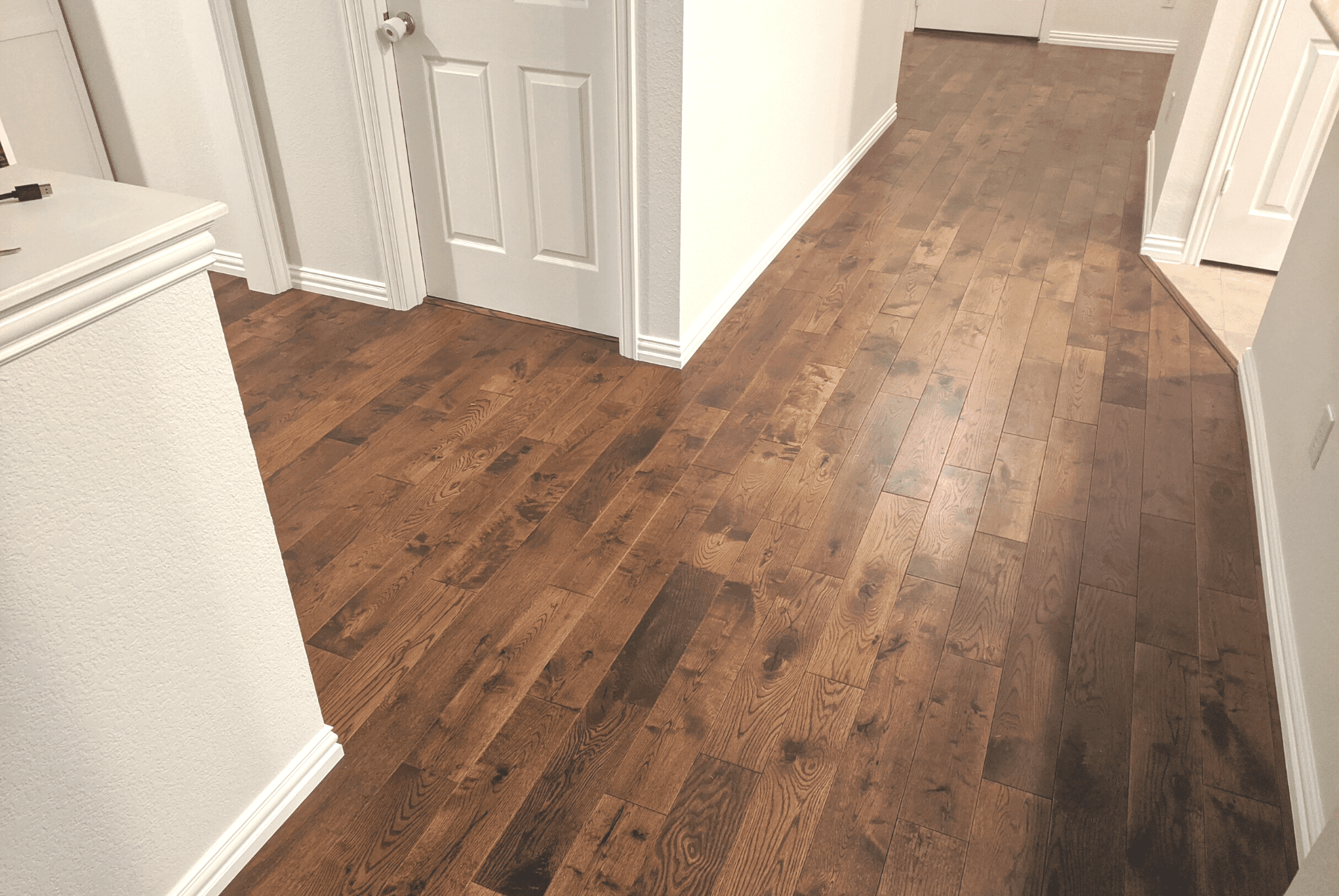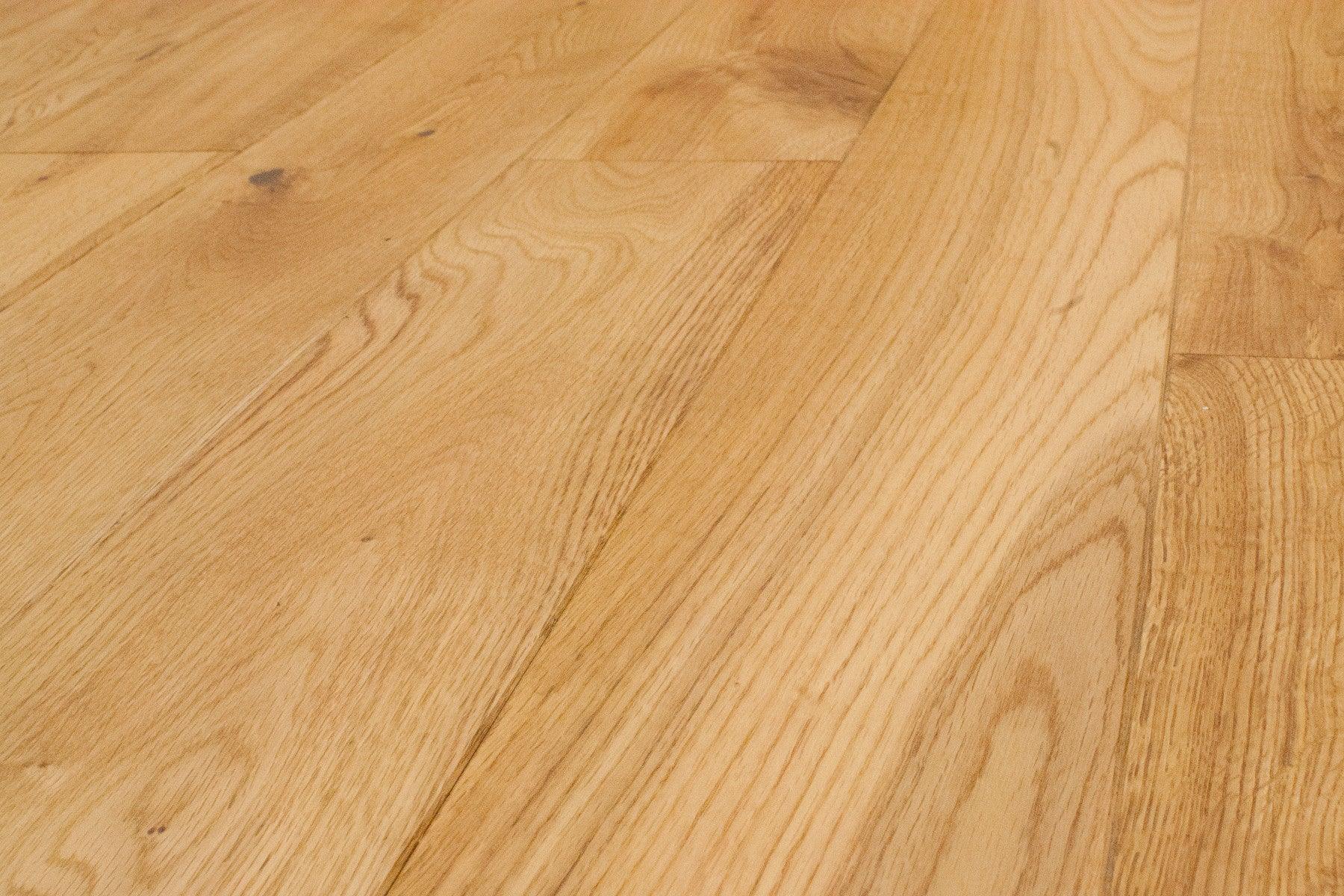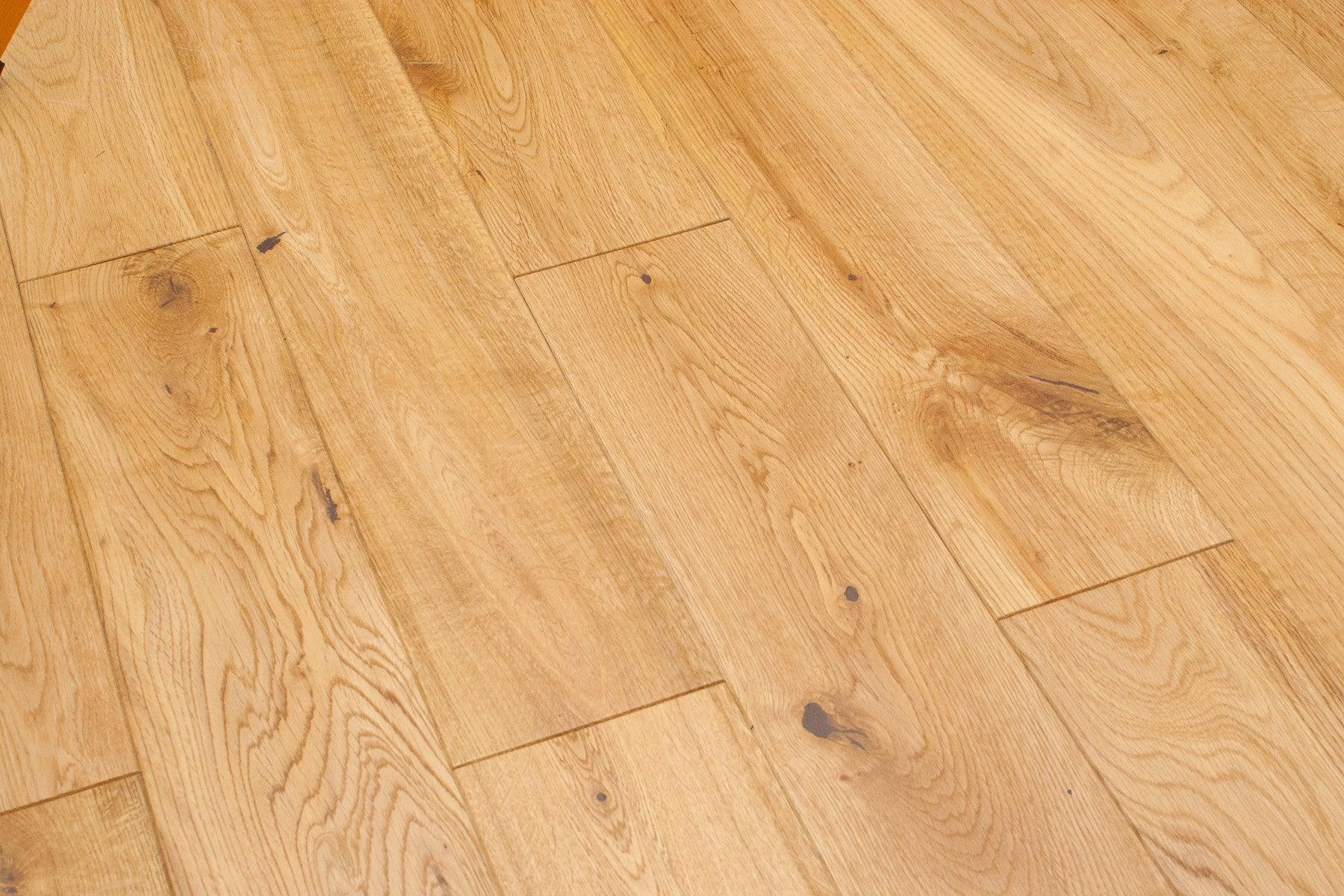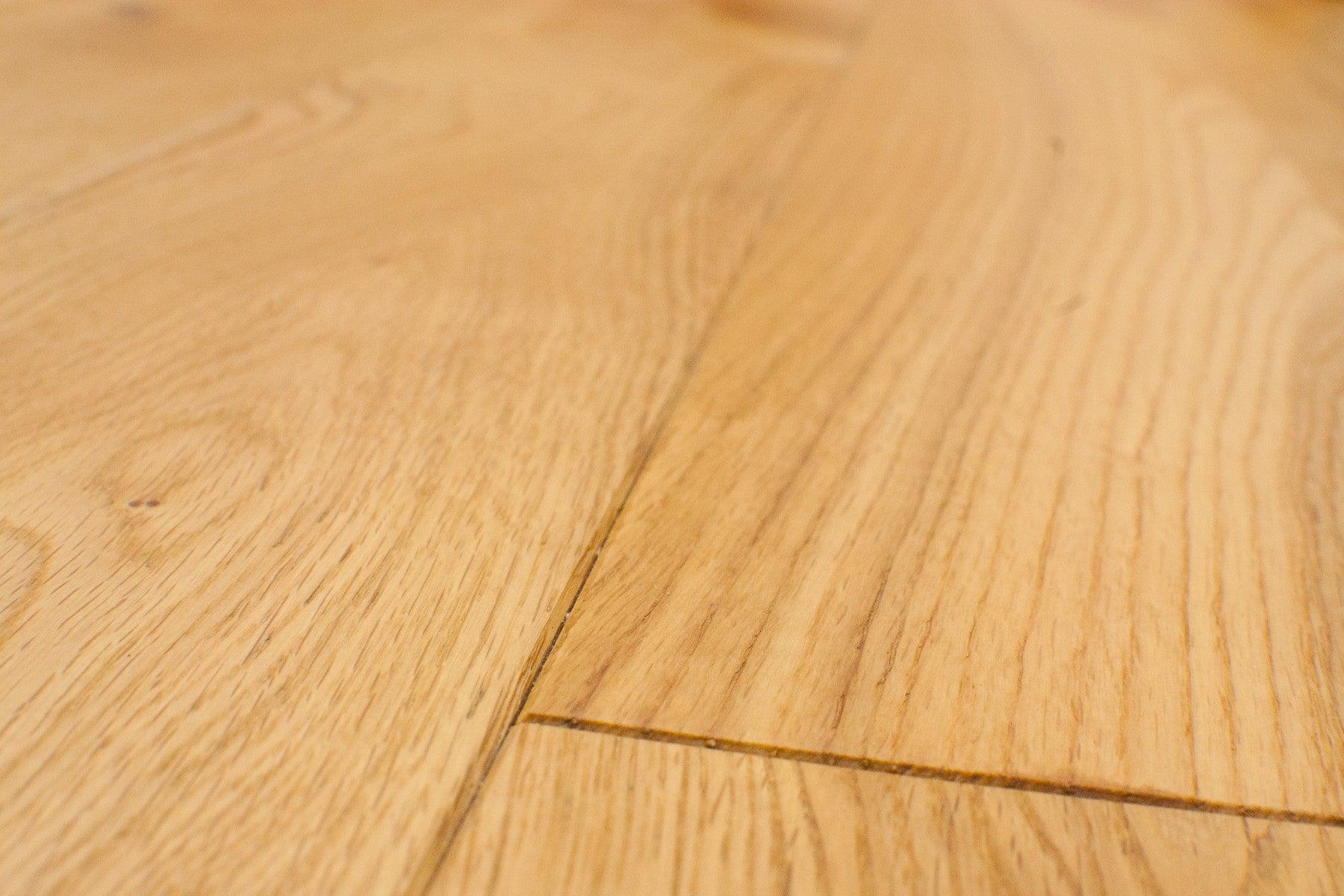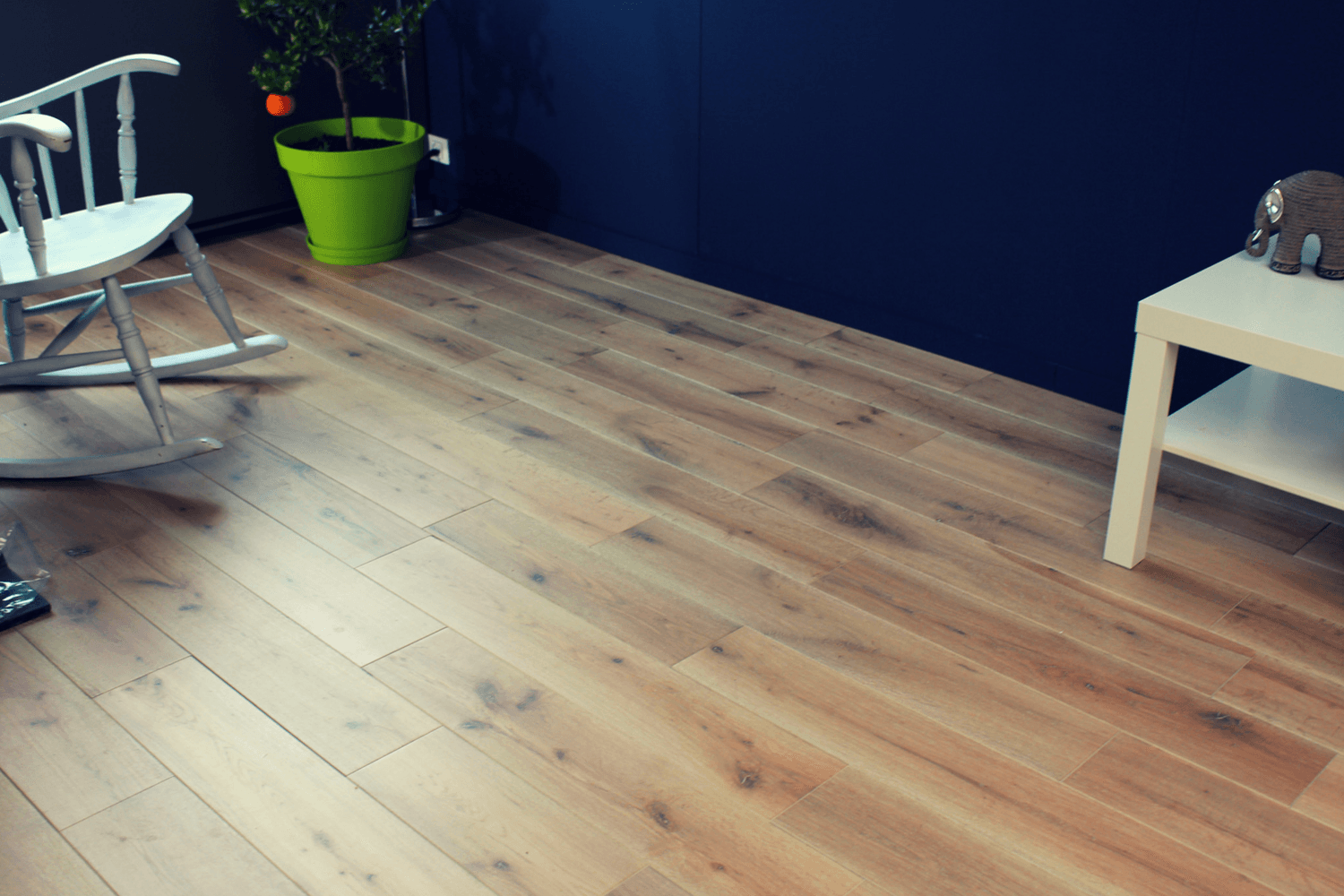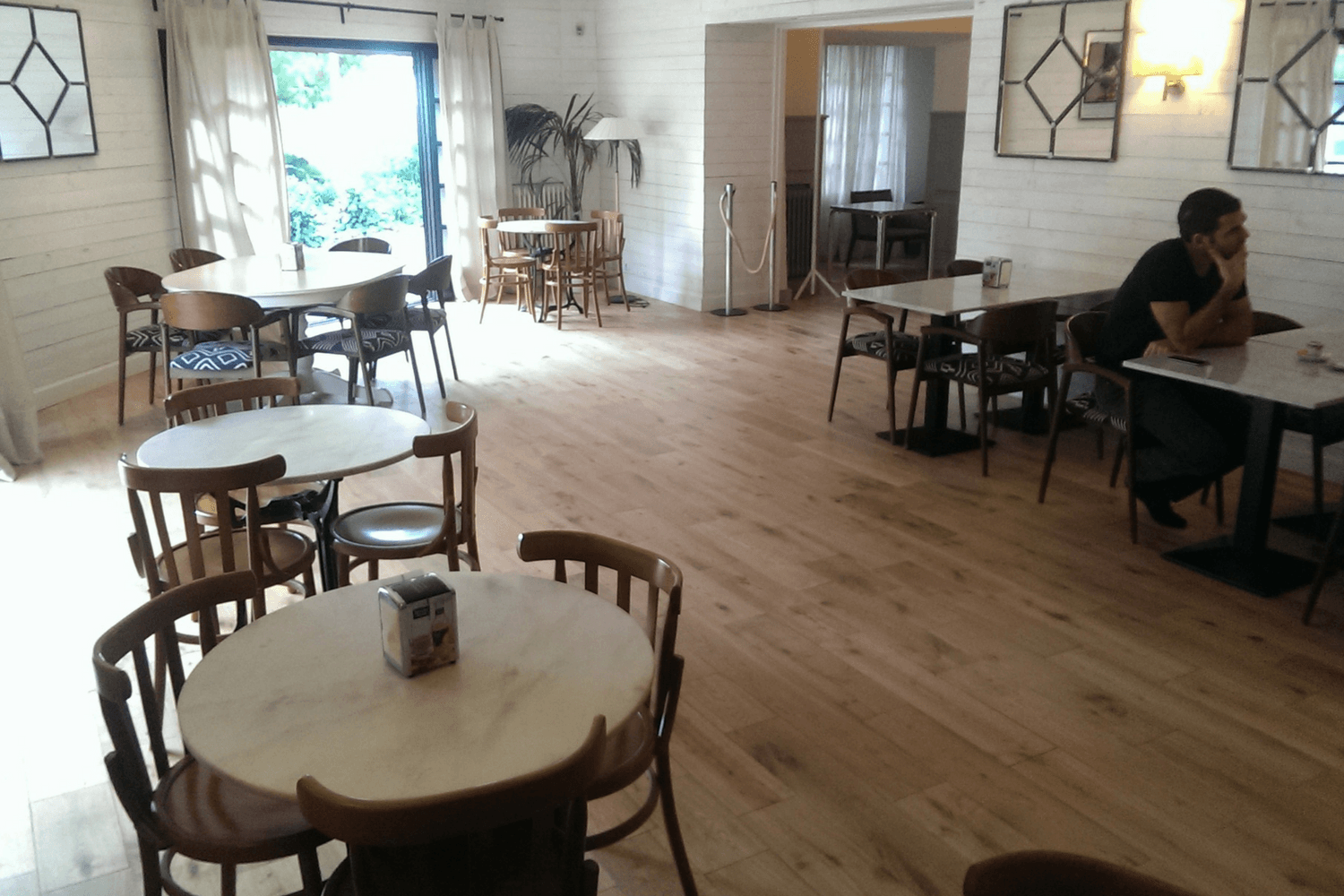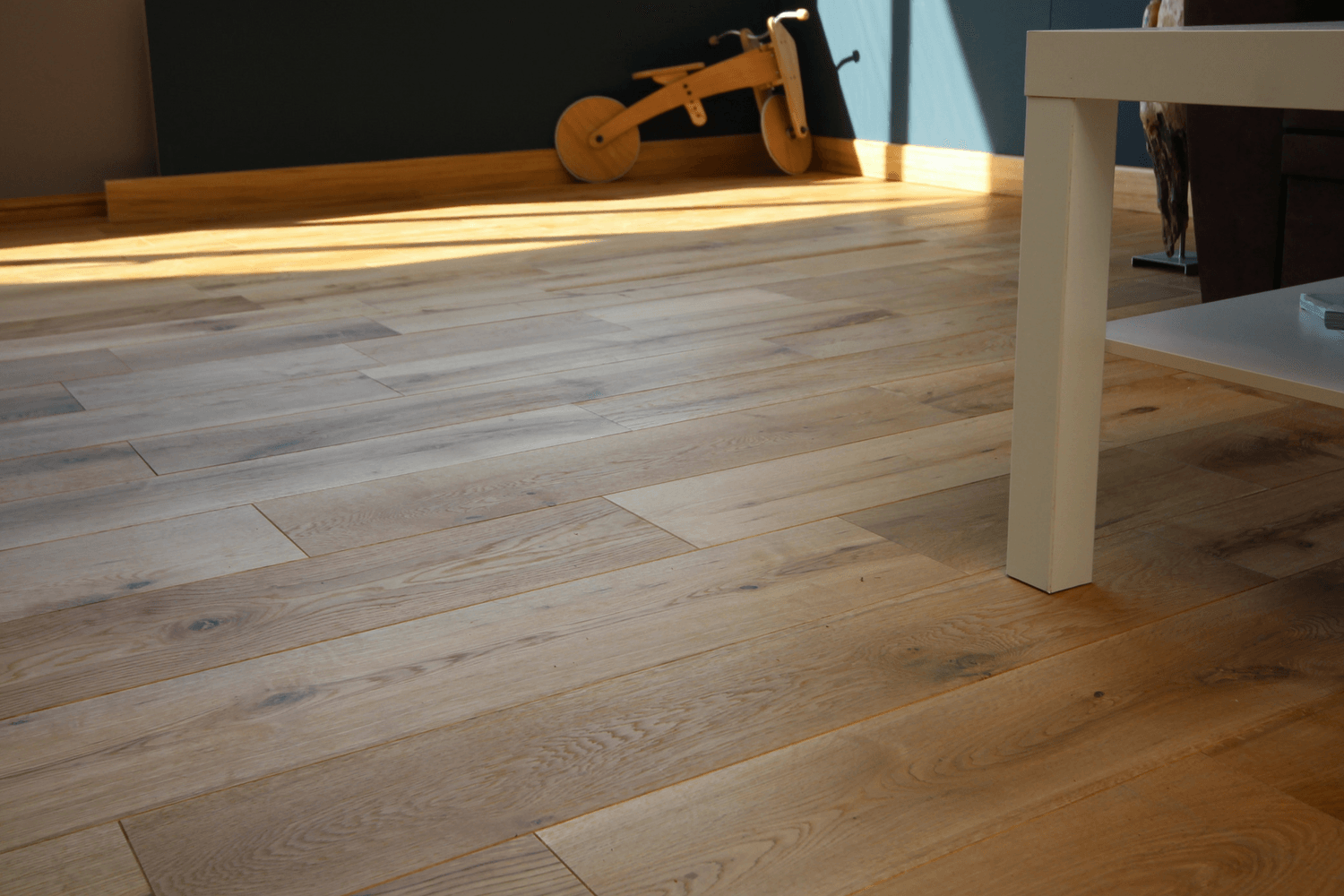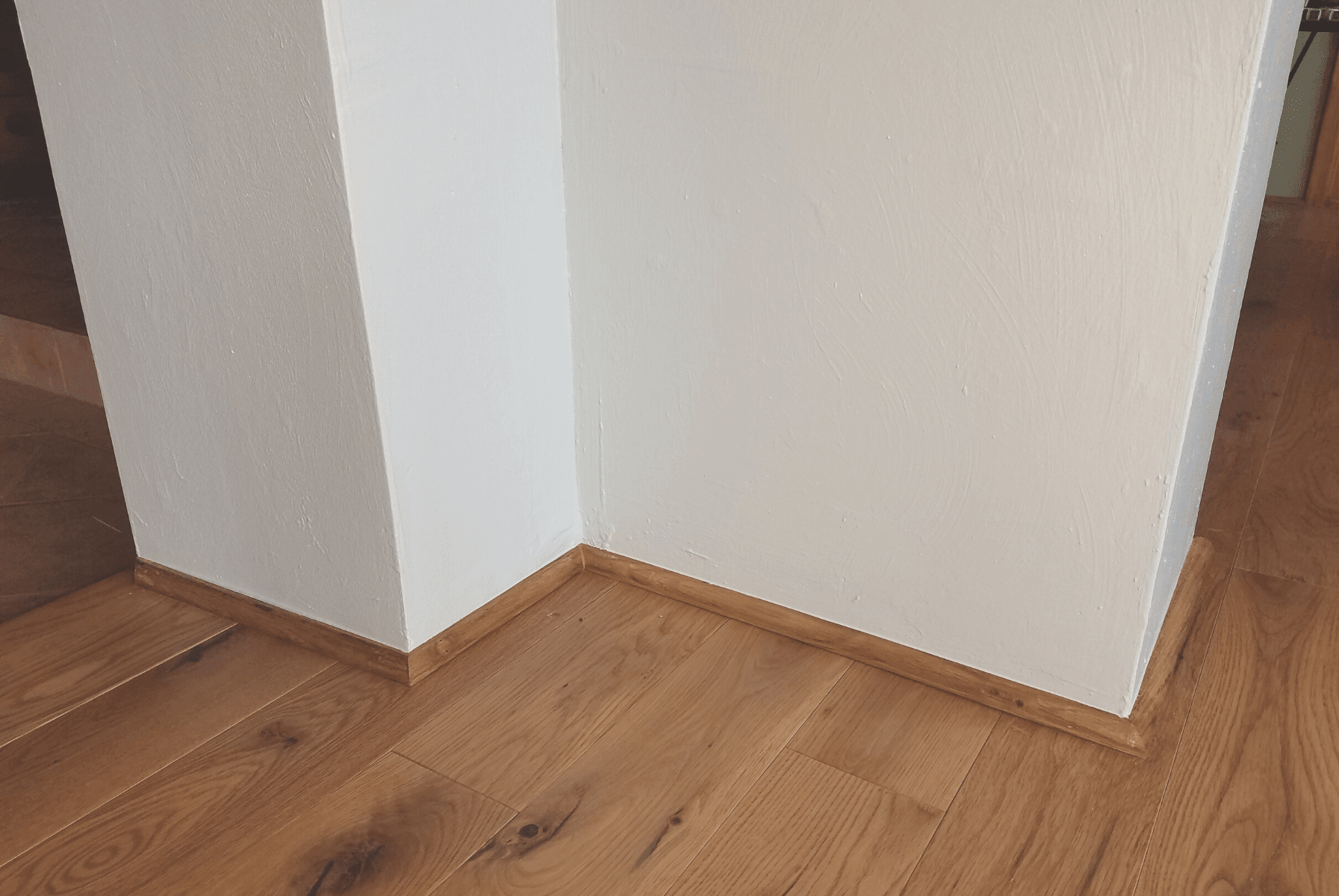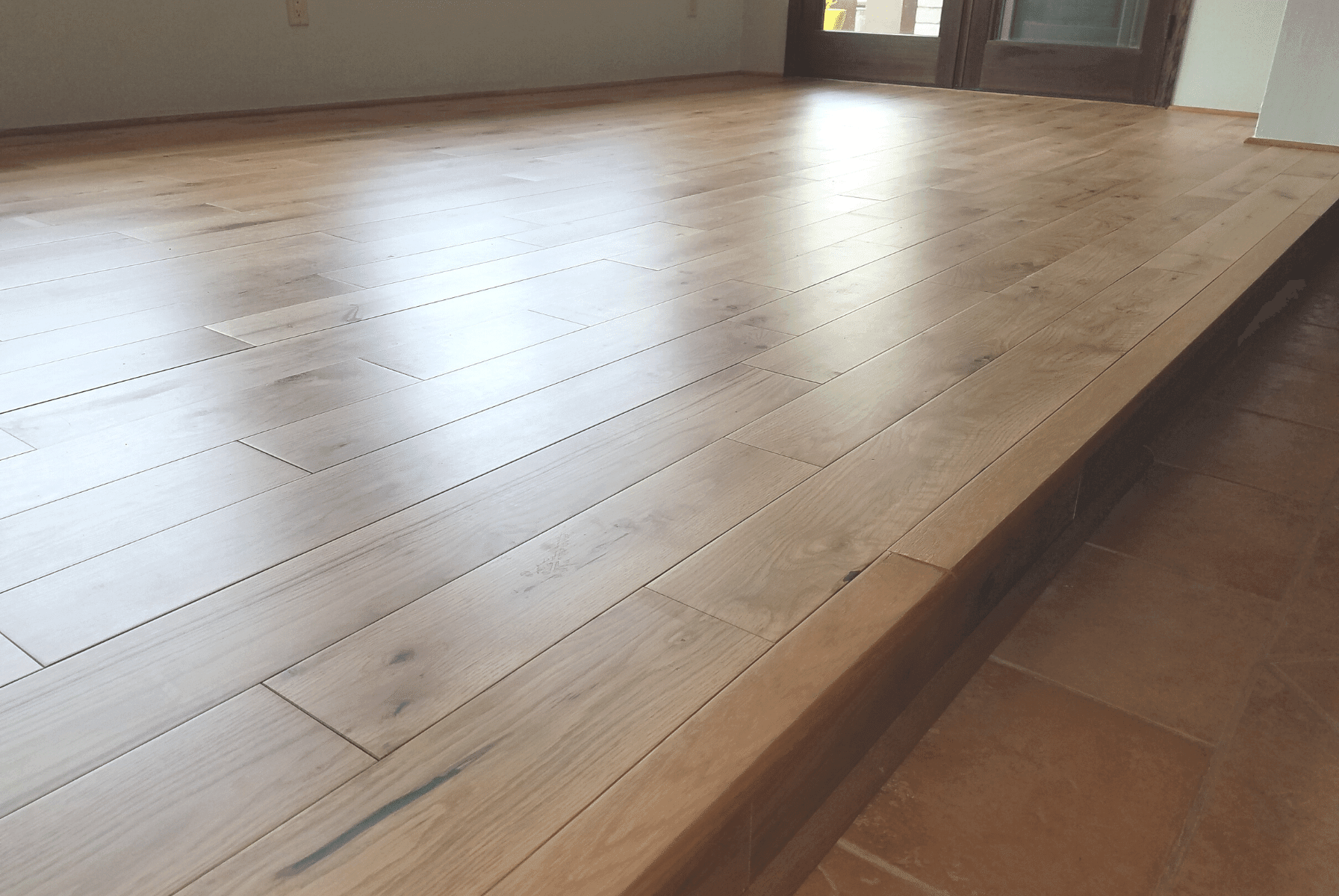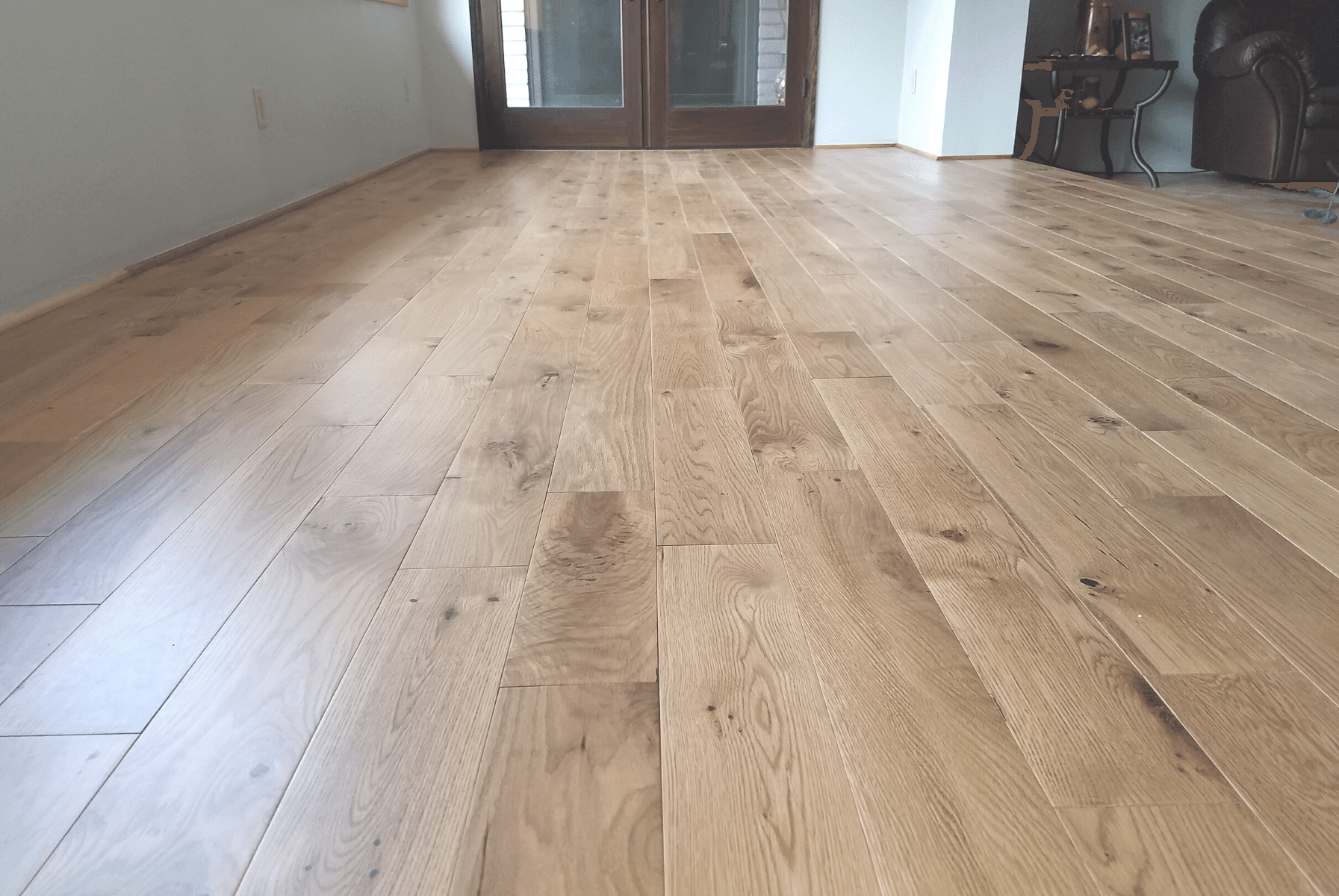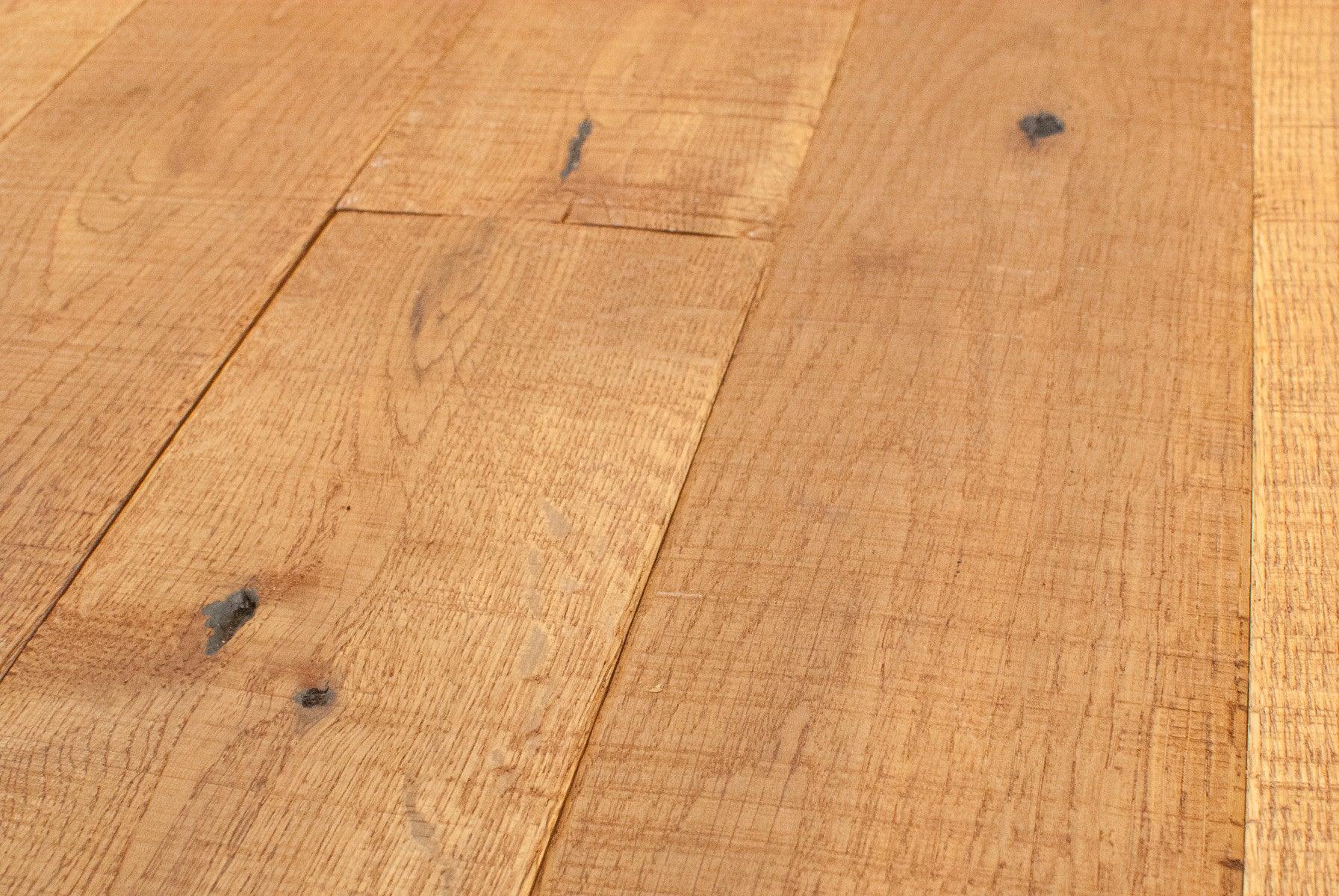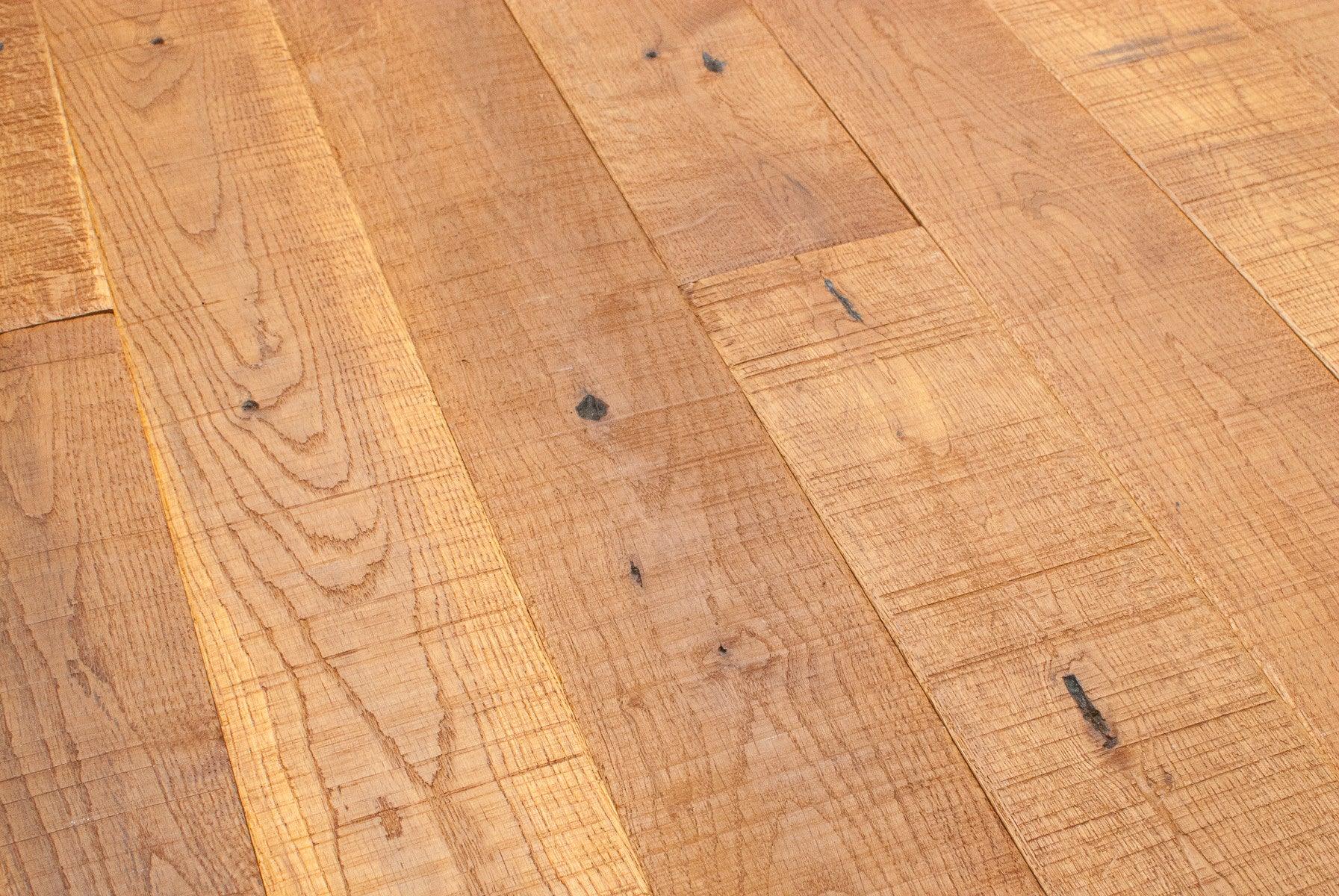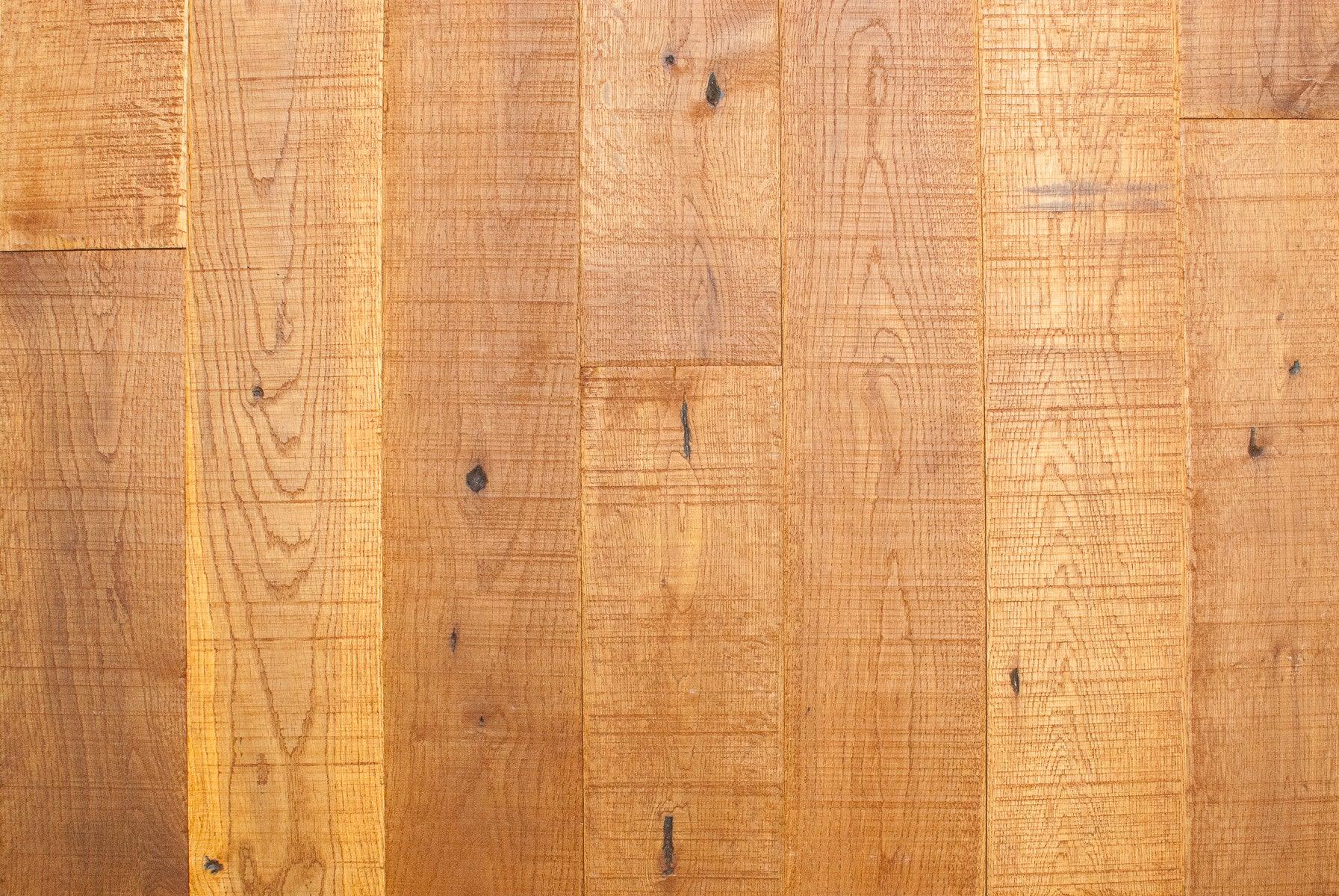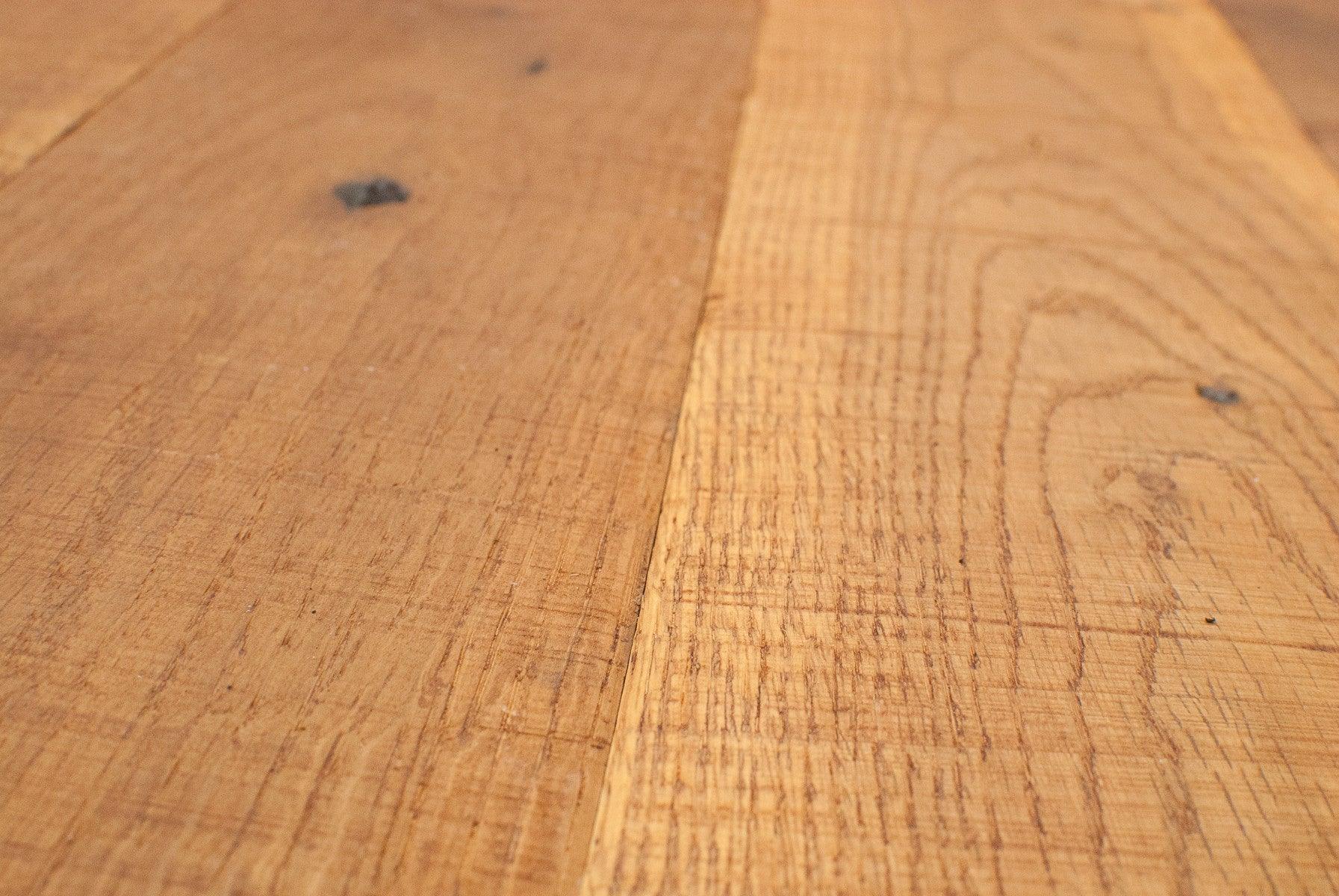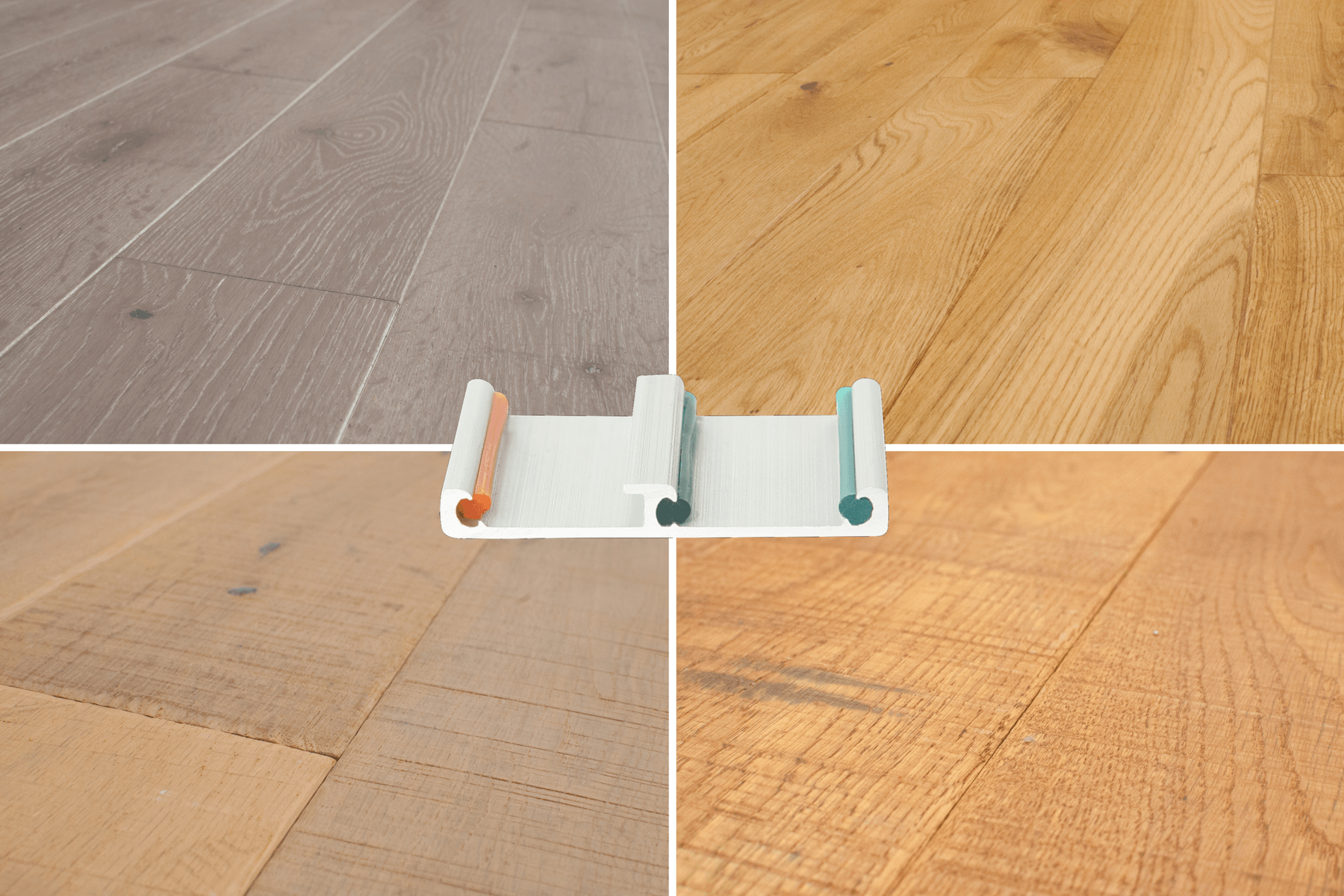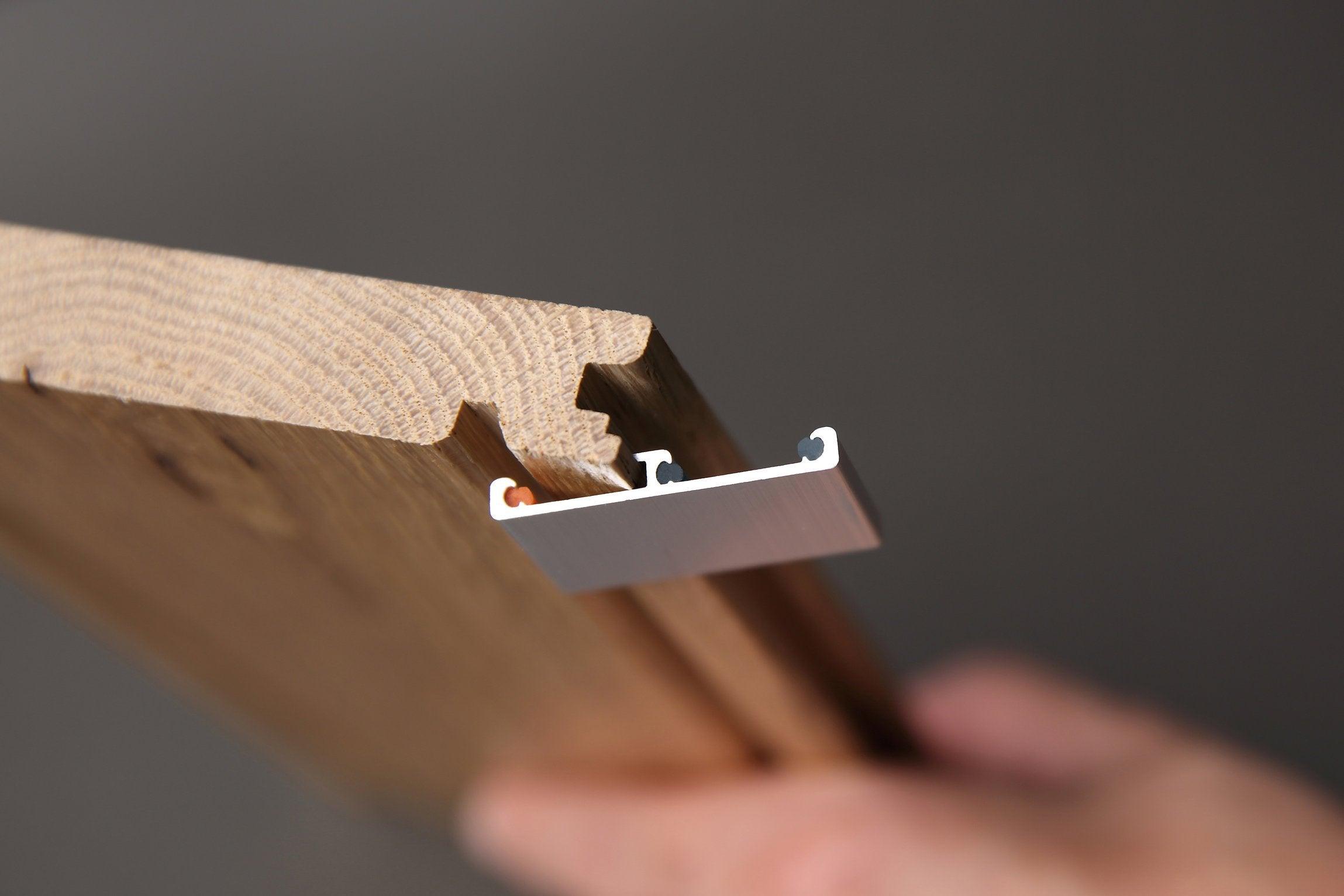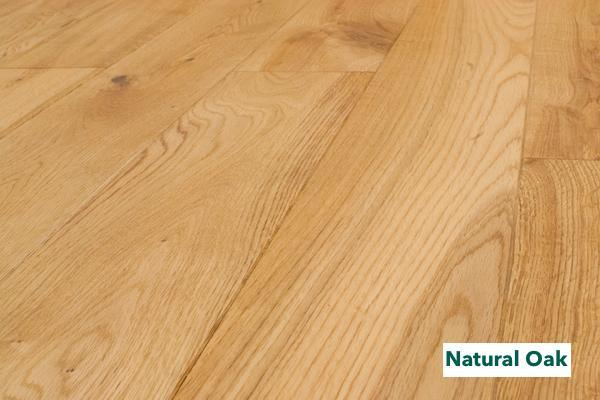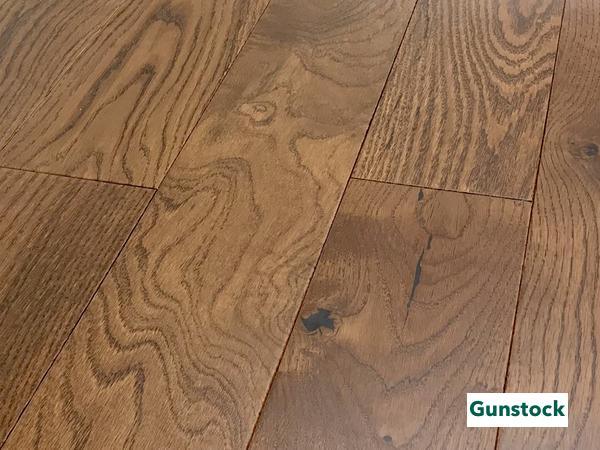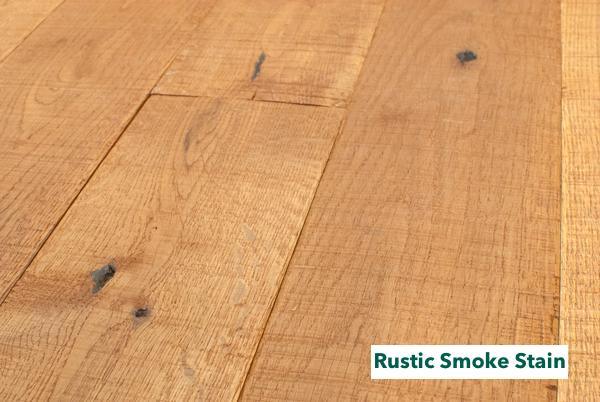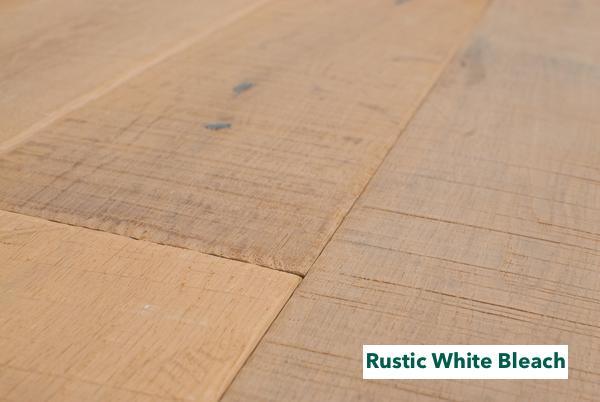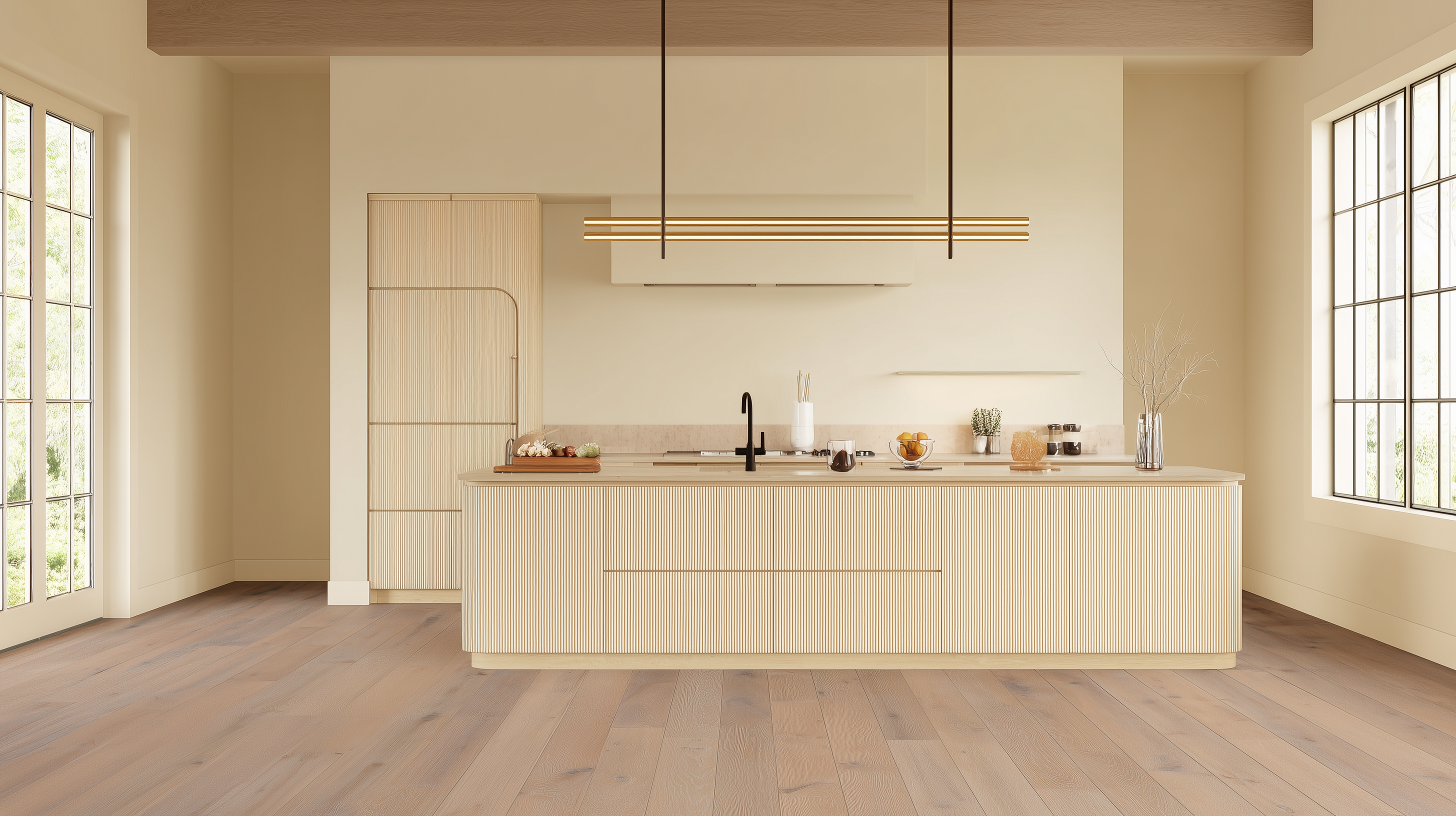When it comes to how your home feels, floors do more than complete a room; they define it. The warmth underfoot, the weight of each step, the quiet resilience of wood, all of it shapes the comfort you live in every day. But not all wood floors are created equal. The debate of solid hardwood vs engineered wood flooring goes far beyond surface appearance. Beneath the finish lies the true difference: how it feels, performs, and endures through seasons of use. If you value warmth, stability, and authentic craftsmanship, solid hardwood—especially Easiklip’s floating oak system, sets a standard engineered floors rarely meet.

Engineered Wood Floors Explained
Solid hardwood floors are a great addition to areas of the home that can accept them. Unfortunately, most solid wood has internal reactions to moisture and humidity and will swell and buckle with exposure. Thus solid hardwood is generally off-limits in a bathroom, basement, or sometimes even a kitchen.
One solution is engineered wood flooring, which emulates the look and feel of solid wood with a 1/8” or less piece of the actual wood (veneer) on the surface of the plank. Below the thin veneer of actual wood are layers of plywood or other stable materials that are bonded together under pressure, making them more resistant to change in the face of moisture and humidity.
The Problem with Engineered Foot Feel
It's one thing to view an engineered floor and agrees that it has 'the look' of real wood. Unfortunately the actual feel when walking across the engineered surface can sometimes be a whole different story. There are a number of factors that contribute to engineered wood flooring feeling slightly different than authentic solid wood like Easiklip.
Gaps, Cupping, and Comfort Issues
Many engineered floors these days are designed to "float." This means that they do not actually attache to the subfloor. The advantage of this is that the floor can expand and contract naturally as it absorbs or releases moisture from the humidity in the surrounding air. This prevents buckling. One major disadvantage is that planks often slide out of place leaving unsightly and possibly dangerous gaps in your floor. These feel awful underfoot and can be cause for tripping, stubbed toes, or even wood splinters.
 When sudden changes in humidity occur, usually a rapid reduction in humidity, the veneer (thin top layer of wood) and the plywood backing (bottom layer of the plank) may contract at different speeds. Often the solid-wood top layer retracts fastest, causing it to peel off the plywood and curl up.
When sudden changes in humidity occur, usually a rapid reduction in humidity, the veneer (thin top layer of wood) and the plywood backing (bottom layer of the plank) may contract at different speeds. Often the solid-wood top layer retracts fastest, causing it to peel off the plywood and curl up.
Unfortunately, this is very difficult to avoid as it depends heavily on manufacturing practices and the wood species used on all aspects of the engineered flooring. Obviously catching your toe or tripping on a cupped engineered floor is not part of a comfortable foot feel that any homeowner is dreaming of. Thankfully, the possibility of cupping is virtually eliminated with Easiklip flooring thanks to built-in expansion gaps and a unique floating clip system that allow the entire floor to expand and contract freely.
Warmth Underfoot: Where Solid Hardwood Shines
It's worth noting a few common problems with engineered floors that contribute hugely not only to the foot feel, but also the aesthetics of your wood floor. These articles delve into some more detail:
- Engineered Flooring - Problem w/ Splinters & More - “A few of these slivers (some up to 3 inches) have been caught in my four-year-old daughter's socks as she runs around.”
- "Large bubbling" in engineered wood floor
- Problems with Engineered Flooring
Aside from all the major structural differences that enhance or detract from foot feel in a wood floor, warmth is also a major factor. There isn't a more satisfying way to start your day than to swing your feet over the edge of your bed and have them land on a nice warm wood floor. Radiant heating, which is not a possibility for many engineered or solid wood floors, is actually a possibility with Easiklip solid wood floors. Click here to read more about how you too can have radiant heating in your hardwood floors.

Choose Comfort That Lasts
In the end, the choice between solid hardwood vs engineered wood flooring isn’t about looks—it’s about living. Engineered wood may mimic the appearance of real timber, but solid hardwood delivers the experience: the warmth underfoot, the quiet strength, and the unmistakable quality that lasts for generations.
Easiklip’s floating oak floors take it further. With natural expansion gaps, a unique clip system, and even compatibility with radiant heating, they’re designed for comfort and longevity. When you walk across Easiklip, you feel the difference immediately—solid, warm, and authentic.
Feel the Easiklip Difference Yourself
Order a free Easiklip sample pack and experience the comfort of real solid oak underfoot. Four finishes, durable clips, and a system designed to last.
